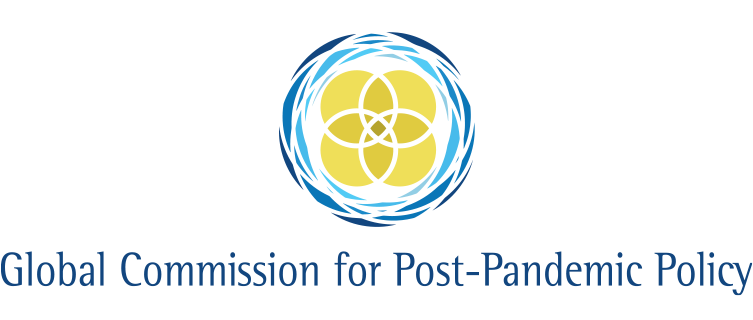Research Monitor
January 26th 2021
Health
Vaccine data from Israel
Israel, with its population of 9 million people and as the current world leader in vaccination rates per capita, has become a kind of working laboratory of the efficacy of the vaccines in preventing infection. As such – and this appears to have been by agreement between the government of Israel and Pfizer/BioNTech, the vaccine’s suppliers – Israel is yielding the first real-world data on efficacy at different stages of the programme. The results will be studied widely all over the world as other vaccination programmes are planned and rolled out.
The study was run by Israel’s largest health-care provider, Clalit Health Services, in Tel Aviv. In a preliminary analysis, the progress of 200,000 people who received the two-dose RNA-based vaccine produced by Pfizer/BioNTech were compared with 200,000 people who did not. The researchers found that the first dose of the vaccine reduced the risk of infection with COVID-19 by 33% within 14 days. These figures were backed up by a similar but smaller analysis run by Maccabi Healthcare Services––also in Tel Aviv. The studies were highlighted in both Nature and the British Medical Journal. Neither study has yet been peer reviewed, however.
The findings were below expectations, but 14 days is likewise a very early point at which to make assessments. In clinical trials, Pfizer had reported an efficacy of 52.4% after two weeks, while data from Public Health England indicated that the vaccine could be up to 89% effective between days 15 and 21. However, the Clalit Research Institute emphasised that––in line with Israel’s vaccine roll-out plan––all study participants were 60 or older. This contrasts with both the aforementioned clinical studies, which had to include younger people too. The researchers made clear that this difference is likely to be the source of the discrepancy, as older people’s immune systems may be slower to respond.
PTSD and pandemic stress
A new study published in the journal PLOS ONE investigates the cumulative effects of fear and stress linked to the COVID-19 pandemic, to assess whether COVID-19 is producing symptoms that qualify as Post-Traumatic Stress Disorder (PTSD). It found that it is.
PTSD is an established set of symptoms and reactions––including intrusive memories, like flashbacks––that frequently develop in people exposed to an event that threatened their life or safety (for example, sexual assault, natural disaster or war). The stresses of the COVID-19 pandemic do not fit neatly into existing PTSD models, or diagnostic criteria. However, a body of recent international psychological evidence seems to reflect unusually high levels of traumatic stress symptoms over the last year. This suggests that COVID-19 should also be considered a serious traumatic stressor, one that can lead to PTSD symptoms.
To test this hypothesis, a team of researchers from Flinders University in Adelaide, Australia, recruited 1,040 online participants from five western nations (the United States, the United Kingdom, Canada, Australia and New Zealand). The volunteers were asked to indicate and reflect on any COVID-19-related stresses they had been exposed to, report their COVID-19 media diet and then complete the Post-Traumatic Stress Disorder Checklist-5 (PCL-5)––a standard diagnostic measure.
Of the sample, 13% of respondents had traumatic stress symptoms consistent with the levels necessary to qualify for a clinical diagnosis of PTSD. The study is one of the first to so clearly draw a link between the COVID-19 pandemic and post-traumatic stress.
Economics
A new paper published in the American National Bureau of Economic Research (NBER) Working Paper Series investigates whether the global COVID-19 pandemic has worsened global income inequality.
The COVID-19 pandemic marks one of the largest shocks to the global economy in recent memory. As a consequence, there are concerns that––like most such shocks––the economic stresses of COVID-19 will only widen income inequality both within and between countries.
To test this hypothesis, Angus Deaton, a Scottish-born economist now at Princeton University in the USA who was awarded the 2015 Nobel Memorial Prize in Economics, compared data on nations’ per capita income from the International Monetary Fund (IMF) and World Bank with their publicly reported COVID-19 deaths per million inhabitants.
The results affirm an odd––but recognised––relationship. On average, low income countries have reported markedly fewer deaths per million than high income ones. To infer the implications for growth, Professor Deaton then compared both the IMF and World Bank’s 2021 growth forecasts for each country with COVID-19 deaths per million. This second relationship is also clear. The more deaths a country has suffered from COVID-19, the lower its 2021 growth forecast. The two trends together suggest that––on average––low income countries are likely to recover faster from the COVID-19 economic shock than are higher income ones. If true, then income inequality between countries can be expected to fall over the next year.
However, Professor Deaton strikes a note of caution. This nominal decline is true only when inequality between countries is not weighted by population. When it is, global income inequality is in fact expected to rise in 2021. The difference reflects the fact that China is no longer a low-income country. The global population is estimated at 7.8 billion people. Out of this, 4.4 billion now live in countries poorer than China, while only 1.4 billion live in countries richer. As a consequence, the strong growth expected from the Chinese economy in the next year will only worsen inequality between countries, rather than improve it.
Meanwhile, it is noteworthy that Professor Deaton is also engaged on studies of the effect of COVID-19 on inequality within countries. With the Nuffield Foundation and the Institute for Fiscal Studies in Britain, the IFS-Deaton Review is studying long-term trends of inequality in the United Kingdom and attitudes to it, including how a health and economic crisis such as the pandemic is affecting those trends and attitudes, and what policy responses should follow.
Politics
A new paper commissioned by the International Chamber of Commerce––and also published in the American National Bureau of Economic Research (NBER) Working Paper Series––makes the case for a more equitable distribution of COVID-19 vaccines between nations, globally.
The wealthiest countries in Europe, North America and Oceania succeeded early on in locking up much of the initial supply of the various now-approved COVID-19 vaccines, in part because they invested in the research and development required to invent, test and produce the vaccines. In some cases, this will leave them with supplies enough to vaccinate their entire populations two or three times over. On current trends and plans, while many advanced economies intend to vaccinate almost their entire populations by mid-year or shortly thereafter, poorer countries like Bangladesh, Tanzania and Peru may have to wait until 2024 to fully vaccinate theirs.
However, in an inter-connected world there is no way to isolate one’s economy from the effects of continued infection in other economies. To understand the implications of such unequal vaccine distribution for the global economy, a team of academics from Harvard University, the University of Maryland and Koç University in Istanbul, Turkey, used trade data from 35 industries across 65 countries to construct a detailed model of international trade linkages between countries. The team then applied the model to forecast the economic costs of different vaccine distribution programmes.
Their findings are stark. In the most extreme case––in which the advanced economies are fully vaccinated by mid-2021 but the developing world remains largely shut out––the model anticipates losses to the global economy exceeding $9 trillion, with almost half the impact concentrated in the developed world. This is larger than the combined annual GDPs of Germany and Japan. Even in the most likely––and milder––case of earlier poor-country vaccination, the model still anticipates losses from the mal-distribution of between $1.8 trillion and $3.8 trillion––with the greatest impact in the advanced economies.
Photo by Hakan Nural on Unsplash
GCPPP Newsletter
We now publish a weekly newsletter to inform friends and supporters of the Global Commission’s progress and to provide updates when new content is published. Please sign up here:








